Product Care
Cleaning, maintenance, and protection
Furniture
Information about your chair
Ensure that the chair is mounted according to the assembly instruction.
Remember to re-tighten the chair regularly.
Set up chairs might wobble a bit, and this may easily be adjusted by:
1. Loosen all screws connecting the legs, so they are only 80% locked
2. Find a level surface and put the chair down onto this surface
3. Apply weight on the seat
4. Fasten the screws until they are fully tightened (beware that you don’t overtighten)
The manufacturer has equipped the chair with a standard foot cap that might not be suitable for the type of floors in your house. Please find our recommendation in the table.

Warning
Do not tilt the chair while seated.
For your own safety, do not stand on a chair that comes with a swivel function.
Warning for gas spring!
Only trained personnel may replace or repair height adjustment components with energy accumulators.
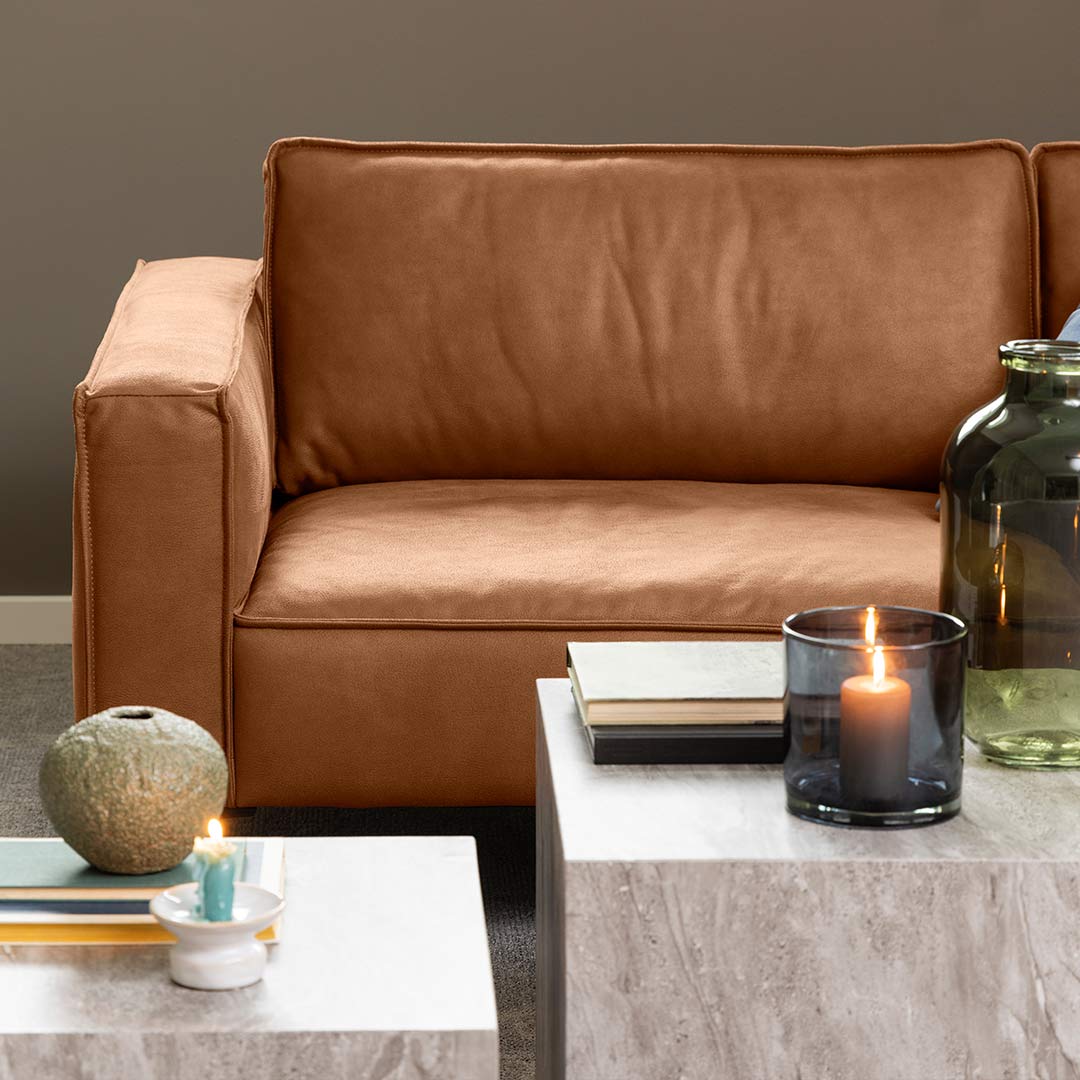
Information about your sofa
Ensure that the sofa is mounted according to the assembly instruction.
- Remember to re-tighten the sofa regularly
- Minimum 20 – 30 cm distance from a heat source
- Do not place in direct sunlight
Most upholstered furniture requires regular maintenance.Contact the store for advice on surface treatment products, if you are in doubt. If your upholstered furniture comes with loose cushions, then remember to swap cushions regularly, so the wear of the multiple seats is worn evenly.
The back cushions are often padded with synthetic fiber wadding, feathers, or granulated foam, to ensure a soft comfort and a pleasant design on the sofa. To maintain the shape of the cushions please shake the cushions to evenly disperse the filling.Even when you do the maintenance properly, the cushions will still change in shape depending on the use of the furniture, especially cushions with feathers.
Warning
Minor wrinkles must be expected due to the nature of the product. Products containing foam will by nature become softer. Most of the comfort changes will occur at the beginning of usage and will fade out once the foam is set.
Clothes influence the wear and tear of the furniture. Studs on clothes will wear on the fabric and coarse woven denim will leave traces as well – especially on the bright coloured cover fabric.Most furniture may emit some smell. This is perfectly normal and not harmful and will decrease in time.
It is important to handle upholstered furniture carefully and know that lifting and pulling near sewn-in pillows will damage the furniture.
Avoid pushing the furniture because of the stress it imposes on the legs.
Quite a lot of sofas consist of several modules that you put together. Small deviations are expectable as upholstery primarily consists of flexible materials.
Minor squeaks may occur, because of the furniture being occasionally exposed to certain stress. This is, however, not usually a sign of anything amiss with the furniture.
With new upholstered furniture, loose excessive threads may occur. These are of no significance and can be cut off with caution.
Lint may appear on upholstery. Depending on factors such as use and cleaning, an excess of fibres may gather in small balls, which usually is considered natural pilling. You can remove them by using a pilling remover.
Foreign fibres on the fabric are not considered a production error and can also be removed with a pilling remover.
Information about your table
Ensure that the table is mounted according to the assembly instruction.
Remember to re-tighten the table regularly.
The manufacturer has equipped the product with a standard foot cap that might not be suitable for the type of floors in your house. Please find our recommendation in the table.
Warning for gas spring!
Only trained personnel may replace or repair height adjustment components with energy accumulators.


Information about your cabinet
Ensure that the cabinet is mounted according to the assembly instruction.
Remember to re-tighten the cabinet regularly.
Materials

Maintenance of your fabric
Maintenance is limited to vacuuming and possibly stain removal.
Cleaning off stains from upholstery fabric should be carried out with caution. Stain removers should only be applied when the effect has been tested on a lesser visible area of the furniture.
Blotches can be avoided by rubbing the stain inwards in gentle circular strokes.
Shadows/ stripes in velvet fabrics can be brushed away, by brushing gently, in a circular motion
If above mentioned doesn´t remove the stripes, then steam should be used. Use either a steamer or a steam iron with low heat. Finish with a brush. Note, do not leave any heat source in the same location too long. There is a risk of melting the surface, so use high caution!
Warning:
Never use solvents.
If the puller on the zip is hidden, then the cover material is not washable.
Any washable cover materials are attached with care instructions – please follow these instructions thoroughly.
Lint may appear on upholstery, depending on factors such as use and cleaning. Excess fibres may gather in small balls, which usually is considered natural pilling. You can remove them by using a pilling remover
Loose excessive threads may occur. These are of no significance and can be cut off with caution.
Lint from foreign fibres on the fabric is not considered as a production error and can be removed with a pilling remover.
Clothes influence the wear and tear of the furniture. Studs on clothes will wear on the surface of the product and coarse woven denim will leave traces as well – especially, on product surfaces with a bright colour.
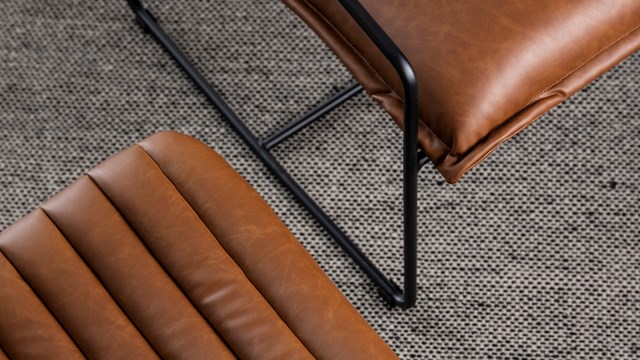
Maintenance and cleaning of your leather look
For daily cleaning, we recommend using a cloth firmly wrung in mild soapy water. Additionally, you can find cleaning products specially intended for PU (Polyurethane) surfaces. These can be used for cleaning the furniture and contributing to the maintenance of the surface. We recommend that you consult your furniture dealer when choosing care products for your furniture.
Do not clean leather with substances that contain alcohol or with substances that have a high acidity/ alkaline value – must be PH neutral (7,0)!
Do not use powder detergents, scuff sponge or steel wool, as this might change the surface appearance
Warning
Clothes also influence the wear and tear of the furniture. Studs on clothes will wear on the surface of the product and coarse woven denim will leave traces as well – especially, on product surfaces with a bright colour.
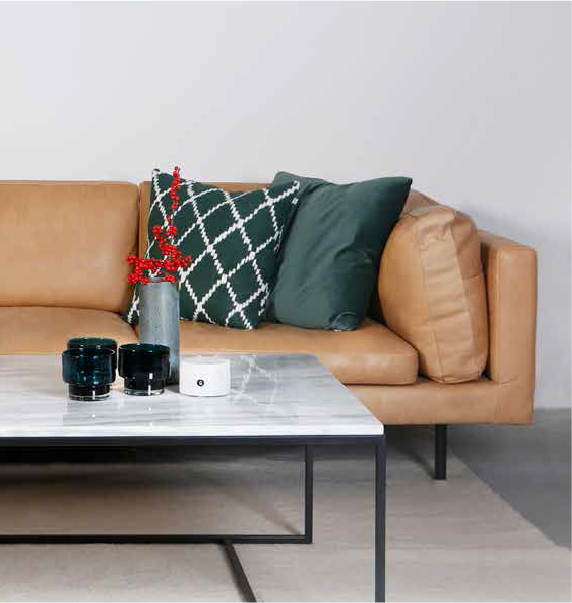
Maintenance of your leather
Leather is a natural material, where differences in structure, scars and other dissimilarities will occur. This is not a production error, but the accepted irregularities that characterise genuine leather.
Leather requires regular maintenance with leather cleaner and leather cream. In addition, we recommend that the furniture is treated with leather cream before use. Especially at places where the leather is exposed to grease or sweat, it is important to use leather cleaner, as grease may have a disruptive effect. The use of leather cream will protect the leather and help it stay flexible. Consult with your furniture retailer on leather care and choice of the correct products.
Do not clean leather with substances that contain alcohol or with substances that have a high acidity/ alkaline value – must be PH neutral (7,0)!
Do not use powder detergents, scuff sponge or steel wool, as this might change the surface appearance
Warning
Clothes also influence the wear and tear of the furniture. Studs on clothes will wear on the surface of the product and coarse woven denim will leave traces as well – especially, on product surfaces with bright colour.

Maintenance and cleaning of wood
Wood is a natural material. Veins and knots are part of the nature of wood and the colours and structures of the wood are natural characteristics and thus not a fault in the wood.
After felling and cutting the wood is still “living”, which means that use and surroundings will still influence the wood, and small cracks may appear (these are insignificant and have no influence on the lifespan of the product). To minimise changes in the furniture you should be aware of the following:
-
Colour variations cannot be avoided by normal use, but to minimise discolouration you must protect the wood from direct sunlight. You could turn around the furniture, so the surface appears alike all over.
-
The indoor climate has a vast influence. During the cold and dry winter months, the wood will contract whereas during the humid and hot summer period it will expand. Try to keep a constant indoor climate of around 20˚ C, and normal air humidity of approx. 40-60%, and always avoid keeping the furniture in unheated rooms.
-
Before the product leaves the factory, it has been given a pre-treatment but therefore, it´s recommended to give the product an additional treatment before use. Note that wood can be surface treated differently and you should therefore treat the surface with caution – Oil treated surfaces must be treated with oil and soap-treated surfaces must be treated with soap etc. In case of doubt about how your product is treated, please take immediate contact with the company that sold you the product.
-
Oiled and soap-treated furniture should be treated every 4th month, or as needed.
-
Any spills must be removed immediately with a moist cloth.
-
We strongly recommend the use of placemats and coasters, whenever you place something on the furniture.
-
Unless your product is fully lacquered, any wooden surfaces may only be covered with oil cloth for a maximum of 12 hours at a time, to allow the wood to breathe.
Lacquered Wood
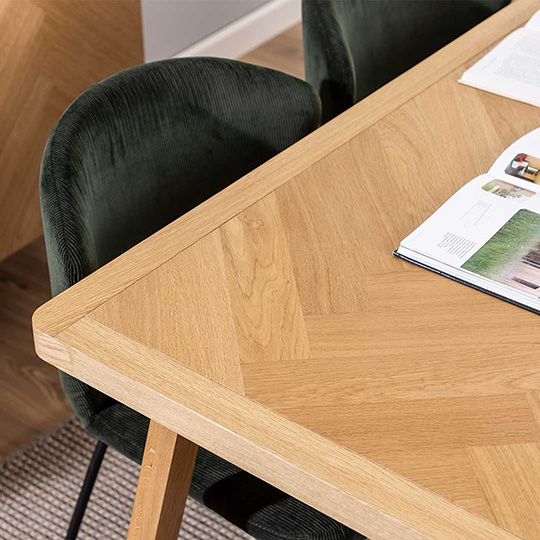
Daily cleaning
Use a cloth firmly wrung in mild soapy water and clean along the grains of the wood. Stronger cleaning methods can cause the surface to change in appearance or dissolve the varnish.
Maintenance
In general, all varnished surfaces are maintenance-free and need only cleaning. However, you can preferably use a suitable lacquer care product. This will also provide more shine to the product if it has become matt during use.
Warning
You should never use sandpaper or other materials that may scratch the surface, as scratches may be difficult to remove from varnished surfaces.
Furthermore, it is important that you use placemats and coasters when moist/hot items are placed on the furniture. Vases, hot coffee mugs etc., can cause moisture to get in touch with the lacquer when items are placed directly on the surface. If this happens, white stains typically occur, and bubbles may appear on the topcoat.
Laminate Wood
MELAMINE

Daily cleaning
Use a cloth firmly wrung in mild soapy water. The furniture must be wiped dry.
Maintenance
In general, all melamine surfaces are maintenance-free.
Warning
Do not use scouring powder or nylon sponges as these will fade or scratch the laminate.
HIGH PRESSURE MELAMINE

Daily cleaning
Use a cloth firmly wrung in mild soapy water. The furniture must be wiped dry along the grains of the wood.
Maintenance
In general, all HPL surfaces are maintenance-free
Warning
Do not use scouring powder or nylon sponges as these will fade or scratch the laminate.
Veneer Wood

Daily cleaning
Use a cloth firmly wrung in mild soapy water. The furniture must be wiped off along the grains of the wood.
Maintenance
Maintenance should be done the same way as for solid material – for more information, select; “oil”, “soap” or “lacquered” surface.
Warning
Please note – that lacquered veneer can under no circumstances be sanded. Oil and soap treated veneer has a thin wear surface and therefore, sanding on these surfaces should be limited to a minimum!
Oiled
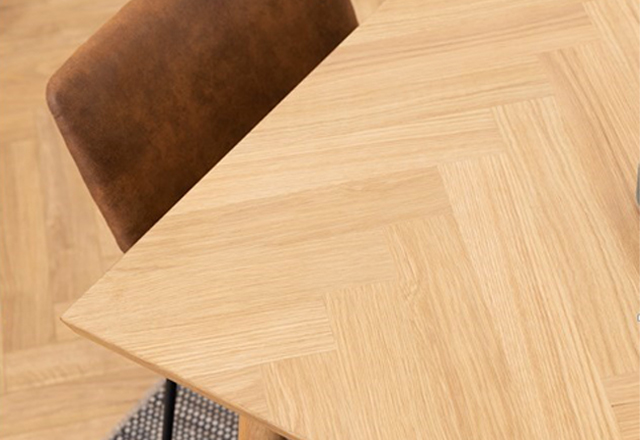
Daily cleaning
Use a cloth firmly wrung in mild soapy water. The furniture must be wiped off along the grains of the wood.

Maintenance
Start with cleaning as per above, and let the furniture dry for a couple of hours. Any dirt stuck on the surface and any small cracks can be removed by sanding with sandpaper grain 180 - 240 along the grains of the wood.

When the furniture is completely dry you can apply the oil. It is important to know whether the furniture is treated with bio-oil or whitewash. We recommend you retreat with the same type of oil as the original, to maintain the original colour for as long as possible.
It is preferable to begin by treating the back/underside of the furniture. This will make you comfortable with how the treatment is executed and ensure that the top does not start to warp.
Apply the oil with a neutral sponge or cloth along the grain direction.
To avoid spontaneous combustion of the oily cloth, you must moist the cloth with water before discarding it into an airtight container (e.g. a sealed plastic bag).

The surface of the product will often become rough after oil application and small cracks might appear or the surface might become slightly warped. This is quite natural for wooden products and this roughness should be sanded down using sandpaper grain 180 – 240 along the grain direction, between each oil application. Dust from sanding should be wiped off and the surface of the product should be dry before the oil treatment is continued. When the roughness of the wood no longer appears, you have completed your maintenance.

With most oils, it is necessary to wipe off the top after application, to remove excessive oil. We recommend that the instructions on the products are followed. Especially with whitewashed oil, it is important to apply an even layer on the furniture, given the risk of causing white stains.
Small scratches are removed/minimised with sandpaper grain 180 - 240 (steel wool cannot be used, as it may discolour the wood), and is always applied along the grain. It is important to establish whether the furniture is solid or veneer. On veneered furniture, the wooden layer is often less than 1 mm thick and can therefore not be ground as strongly as solid wood. Especially on corners and close to the edges, you must be extra careful when sanding.

Maintenance of metal
In order to avoid rust, make sure that the surface is clean and dry.
Warning
Studs on clothes will wear the surface of the metal.
Do not scuff the surface with a hard object.
Chrome
Daily cleaning
For daily cleaning, we recommend using a cloth firmly wrung in mild soapy water. Thereafter, wipe dry with a cloth to remove excess moisture.

Lacquered Metal
Daily cleaning
For daily cleaning, we recommend using a cloth firmly wrung in mild soapy water. Thereafter, wipe dry with a cloth to remove excess moisture.


Maintenance of plastic
Do not place the product in direct sunlight, as it might discolour or deform your product.
Studs on clothes might scratch the surface of the product.

Maintenance and cleaning of glass
To avoid scratches, make sure that the glass surface is clean and dry.
We strongly recommend the use of placemats and coasters whenever you place something on the furniture.
Avoid striking corners and edges.
Simply clean the product using glass cleaning and wipe it using a microfiber cloth/soft lint-free cloth/newspaper.
Hardened stearic, should be removed by scraping it with a spatula made of plastic or wood.
Maintenance and cleaning of ceramic
Thanks to the heat-resistant surface, ceramic does not require special cleaning.
If any dirty spots appear, simply use a firmly wrung fibre cloth or a piece of paper to wipe the surface clean.
Ceramic against ceramic can cause permanent damage to the surface.
We recommend that you use a coaster to prevent this.
Warning
Following cleaning methods, must under all circumstances NOT be used
- Polishing with sponge or steel wool
- Bleaching agent
- Cleaning detergents with strong acids
- Solvent
- Steam


Information about stone
Marble and travertine are two different types of stone, which both belong under the category limestone, which is nature’s chalk and minerals formed during an extensive process.
The stones were extracted from a quarry, afterwards, the plates are cut from massive solid blocks. This means that the plates naturally vary in colour, structure and surface. Generally, marble will show noticeable veins which may vary in colour from the rest of the plate.
All depending on the type of marble, some plates are polished and are rather smooth, whereas others are naturally rough and vary in the surface.
Often, water veins, indentations and the like will be noticeable when you touch the surface.
Travertine is from nature filled with pinholes. The factory has filled these pinholes with filler and they are part of the characteristics of travertine. It will vary from each plate how visible the pinholes are, but as such, they enhance the fact that travertine is a natural material.
Daily cleaning of stone
You should simply wipe the surfaces with a moist cloth and a mild soap solution.
All stone furniture is lacquered and sealed against fat, wine, coffee, etc. but cannot withstand solvents like acid, cellulose and so on. However, it is important to remove moist substances immediately with a cloth to avoid marks on the surface.
Furthermore, you must use placemats and coasters when moist/hot items are placed on the furniture. Vases, hot coffee mugs etc., can cause moisture, which at worst may ruin the stone itself, and moisture and heat may ruin the lacquer.
Stone is vulnerable to hard bumps and scratches on the surface and edges.
Lacquered stone is lacquered and sealed against fat, wine, coffee, etc. It is important to wipe away any spills immediately to avoid marks on the surface. The lacquered surface requires no further maintenance but normal cleaning.
Water-polished stone has undergone a lengthy polishing process where the surface is polished completely smooth with a waxing agent. Therefore, we do not recommend any treatment before using. Although water-polished stone appears more natural it is less resistant than lacquered stone furniture. Therefore, it is even more important immediately to wipe away any spills. In time water polished furniture will appear matt which demands further maintenance. We recommend using cleaning agents suited for stone products, which you can typically buy from your local furniture retailer.

